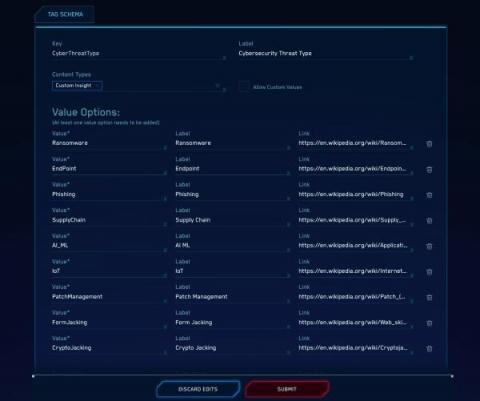Security | Threat Detection | Cyberattacks | DevSecOps | Compliance
Security
Three Cloud SIEM innovations that improve team collaboration, tailor SOC workflows, and encourage customization
Cybersecurity Insights - Fileless Attacks
CIS Control 10: Malware Defenses
With the continuing rise of ransomware, malware defenses are more critical than ever before with regard to securing the enterprise. Anti-Malware technologies have become an afterthought in many organizations, a technology that they’ve always had, always used, and never really thought about. This control serves as a reminder that this technology is as critical as it ever was and lays out the minimum requirements for ensuring your malware defenses are up to the task.
7 Cybersecurity Challenges to Solve with a UEBA Deployment
The Ultimate Guide to Cyber Threat Intelligence
A successful breach can do serious damage to a business, costing a company millions of dollars in lost revenue, exposed intellectual property, downtime, reputation loss and fines. The right practices can help keep a company safe — but only if they know what threats to look for, and where their network is weakest. Cyber threat intelligence is the process through which companies identify weaknesses in their own networks.
How much is fare scraping costing the travel industry?
Scraper bots make up the worst of bad bot traffic for the travel industry, with sites witnessing over 90% of traffic attributed to fare scraping. Whilst this activity can be benign or even used for positive means, if uncontrolled it can impact top line revenue, bottom line profits and customer experience.
The threat within: the emerging trend of ransomware gangs targeting employees
Guarding Against The Human Element: How Insider-Threat Trends Should Guide Cybersecurity Policy
The number of data breaches has increased every year for more than a decade. Each incident costs companies time, money and resources to repair while inflicting often-irreparable damage to their brand reputation and customer loyalty. This reality only became more apparent during the recent pandemic as threat actors capitalized on the moment’s disruption and uncertainty to wreak havoc on our digital environments. In 2021, the number of data breaches is already on pace to reach a new record high.
Application Security (AppSec)
There is a movement in the IT security world that is gaining traction, and it is based around the implementation of security within applications from the beginning. You may have heard buzzwords like “AppSec”, “DevSecOps” and “Shift Left”, but what do they actually mean? What does it take to “Shift Left” when developing a secure application? You can read about dealing with dependencies in our blog post.











